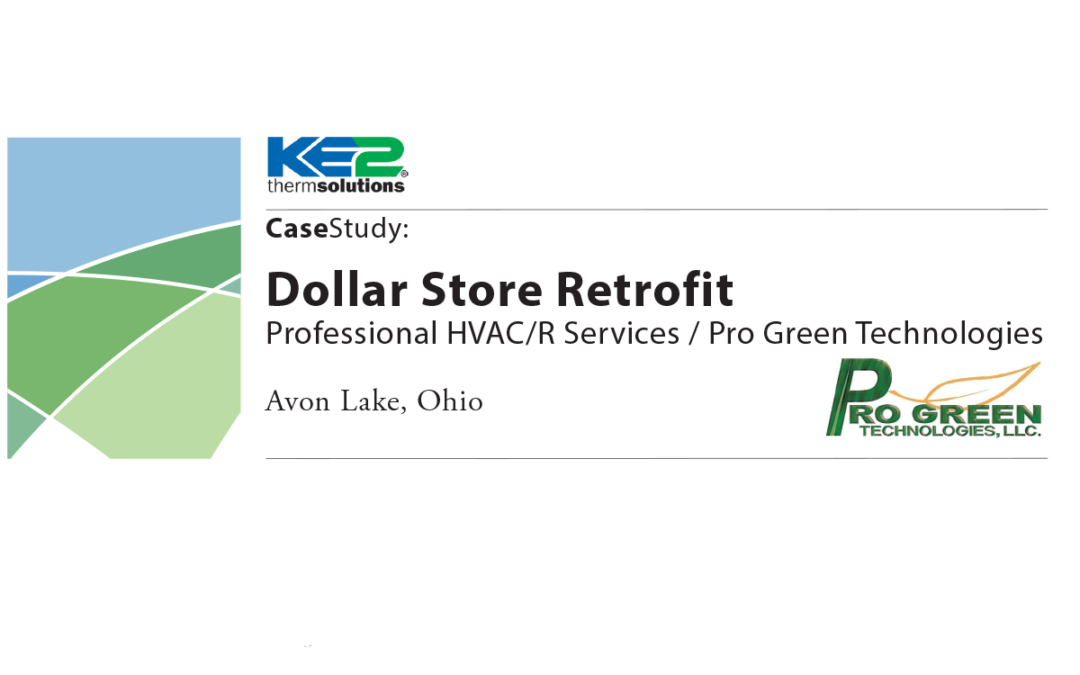With over 40 years of experience, and installations across the country, Professional HVAC/R Services (PRO), with industry veteran Joe Kokinda, is no stranger to unique or difficult refrigeration applications.
The company is best known for installing environmentally efficient, self-contained supermarket grade refrigeration fixtures, for standard retail locations. PRO’s green approach to refrigeration, has led them in pursuit of products that provide the best energy savings possible, as well as quick and easy installation.
PRO’s energy arm, Pro Green Technologies was introduced to the KE2 Adaptive Control in January of 2017. Pro Green quickly determined the controller was worth putting on a test site. So, when they were called in to correct major icing issues on a dollar store walk-in, Rob Draga, Executive VP for Pro Green, decided to use the store as the test site.
Prior to the retrofit, the walk-in was using a standard digital controller with time initiated, temperature terminated, defrost. Despite the digital controller initiating a defrost cycle four times a day, ice continued to build on the coil, ceiling, walls, and floor, see Figures 1 & 2.
For the test, PRO wanted to compare the existing digital control, with the KE2 Adaptive Control, for performance and energy savings. To gather the data, a KE2 LDA communication device was installed. This provided the ability to remotely monitor, control, and send alarm notifications. The system was then run for one month using the existing digital controller, see the Orange graph line in Figure 3. Then, the system was retrofit with the KE2 Adaptive Control, and run for almost a month, as indicated by the Blue line, in Figure 3.
The adaptive defrost algorithm in the KE2 Adaptive Control, reduced the number of defrost cycles from 120 a month to less than 13, maintaining a more steady space temperature, and saving 24% of the energy needed to operate the walk-in freezer. A summary from the test is shown in Figure 4.
Figure 5 shows an energy consumption comparison between the digital controller (shown in light green), and the KE2 Adaptive Control (in dark green).
The KE2 Adaptive Control also eliminated the persistent ice buildup on the coil, and other walk-in surfaces, as shown in Figure 6. While it is important to maintain an ice free coil from and energy efficiency standpoint, it is equally important to eliminate ice on the floor, which lead to safety issues and liability.
In addition to the energy savings, and elimination of ice formation in the walk-in, another feature that PRO was concerned with was ease of installation. The company prides itself on reducing equipment down time for their customers. Juan Castro, the PRO Service Tech assigned to install the KE2 Adaptive Control, prepped ahead of time, “I watched the YouTube video on ‘How to wire the controller’ the night before, and it really makes it easy.”
Draga was also impressed with the ease of installation, “The entire process was much easier than I ever thought it would be. The labeled terminal board makes things go very smoothly. We were done, even on our first install, a lot sooner than I thought we would be.” According to Draga, the total KE2 Adaptive Control installation took approximately 2.5 hours.
Conclusion: The walk-in experienced 23.93 % energy savings when using the KE2 Adaptive Control. This equates to $500 annually. Additionally, by properly managing the defrost cycle, the KE2 Adaptive Control prevents “fogging,” and the resulting ice formations. Using the KE2 Adaptive Control and the KE2 LDA communication device, PRO sees the opportunity to help their customers achieve greater energy savings, as well as easily implement communication and alarming.

